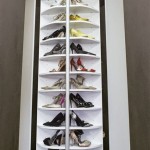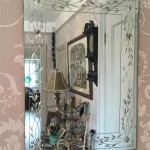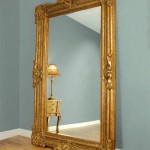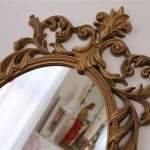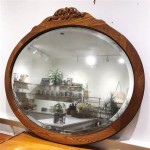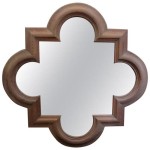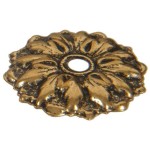Do Convex Mirrors Make You Look Bigger or Smaller?
Convex mirrors, often referred to as diverging mirrors, possess a unique reflective surface that bulges outward. This distinctive shape dictates how light interacts with the mirror and consequently, how images are formed and perceived. This article will explore the properties of convex mirrors and how they influence the size and appearance of reflected images.
Key Properties of Convex Mirrors
Understanding how convex mirrors affect image formation requires examining their key properties:
1.
Diverging Reflection:
The outward curve of a convex mirror causes incident light rays to reflect away from a central point. This divergence is the fundamental reason for the characteristic image distortion.2.
Virtual Images:
Unlike concave mirrors which can produce both real and virtual images depending on object placement, convex mirrors exclusively create virtual images. These images appear to be located behind the mirror's surface and cannot be projected onto a screen.3.
Upright Images:
Images formed by convex mirrors are always upright, meaning their orientation matches that of the object being reflected.4.
Reduced Image Size:
The virtual images produced by convex mirrors are always smaller than the actual object. This reduction in size is a direct consequence of the diverging reflection.Understanding Image Formation in Convex Mirrors
The diminished and upright image produced by a convex mirror is a result of the diverging reflection of light. When parallel light rays strike the curved surface, they reflect outwards. By tracing these reflected rays back (as if they were converging), they appear to originate from a point behind the mirror. This point is where the virtual image is formed.
The further the object is from the mirror, the smaller the image appears. This is because the diverging rays, when traced back, converge closer to the mirror's surface, resulting in a smaller perceived image size.
Applications of Convex Mirrors
The unique properties of convex mirrors make them suitable for a variety of applications where a wider field of view is beneficial:
1.
Security Mirrors:
Convex mirrors are commonly used in stores and security applications to provide a wider field of view, allowing observers to monitor a larger area.2.
Automotive Mirrors:
Passenger-side car mirrors often employ convex mirrors with a warning etched onto the surface indicating objects are closer than they appear. The wider field of view minimizes blind spots but also reduces the perceived size of reflected objects.3.
Traffic Safety:
Convex mirrors are strategically placed at intersections with limited visibility to help drivers see oncoming traffic.4.
Magnifying Glasses (Specific Type):
While concave mirrors are typically used for magnification, certain types of magnifying glasses utilize a smaller convex mirror alongside a larger concave one for improved image clarity.The "Smaller" Image: Explained
The light rays diverging from the convex mirror's surface are the key to understanding why images appear smaller. These diverging rays create an image that appears to be located behind the mirror’s surface at a shorter distance than the actual object's distance. This shorter distance, combined with the diverging rays, results in a smaller apparent size. It is crucial to remember that this is a virtual image; it cannot be projected onto a screen.
Comparing Convex Mirrors to Concave Mirrors
Convex mirrors are often contrasted with concave mirrors, which curve inwards. Unlike convex mirrors, concave mirrors can produce both real and virtual images. Real images can be projected onto a screen, while virtual images cannot. Concave mirrors can also magnify images, making them appear larger than the actual object, in contrast to the diminishing effect of convex mirrors.
Convex Mirrors and Field of View
A key advantage of convex mirrors lies in their wide field of view. The outward curve allows the mirror to reflect light from a larger area compared to a flat mirror. This wider field of view is what makes them particularly useful in applications like security monitoring and driving, where being able to see a larger area at a glance is crucial.
Convex Mirrors and Distance Perception
While the wider field of view is beneficial, it comes with a trade-off: altered distance perception. Because images appear smaller in convex mirrors, objects may seem further away than they actually are. This is why passenger-side car mirrors with convex surfaces often include the warning "Objects in mirror are closer than they appear." This cautionary message highlights the importance of understanding the effect of convex mirrors on perceived distance.
How Do Reflections From Convex Mirrors Make Objects Appear Smaller Quora

Why Do I Look Diffe In Mirrors 5 Common Reasons

Convex Mirrors And Objects Larger Than The Mirror
Objects In The Mirror Are Actually Images Article Khan Academy

Convex Mirrors And Objects Larger Than The Mirror
Objects In The Mirror Are Actually Images Article Khan Academy

Why Do I Look Diffe In Mirrors 5 Common Reasons

How To Choose The Right Sized Safety Mirror Jaybro Blog
Why Do We Look Fitter In Gym Mirrors Quora

Why Do I Look Diffe In Mirrors 5 Common Reasons

